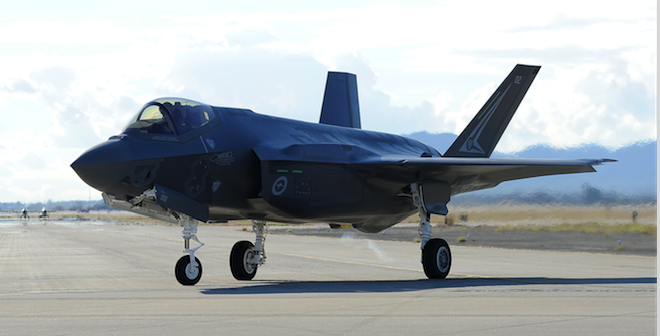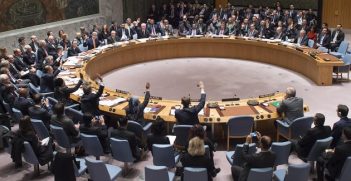Multi-domain Integration: Why Does it Matter?

The current big idea of the Australian Defence Force is multi-domain integration. Australia needs more technologically advanced equipment and more sophisticated strategies otherwise it risks becoming obsolete. This was the dominant topic explored at the recent Royal Australia Air Force (RAAF) Air Power Conference.
The strategy of multi-domain integration focuses on how the domains of air, maritime, land, space and cyber can work together to achieve outcomes in Australia’s interests and enable future joint success. The idea is that by domains jointly acting on issues, there will be a force multiplier whereby the outcomes achieved are completed faster, more effectively and more successfully than by relying on just one or two domains. Though this strategy is very broad and easier said than done, the concept makes sense to try and achieve. If a defence force is fully integrated and interoperable, adversaries can never fully control or take a single domain.
Plan Jericho
Plan Jericho is the RAAF’s strategy to achieve multi-domain integration. It aims to acquire and master the technology capable of coping with the cyber and space domains. This strategy makes Australia capable of operating as a fifth-generation force. It involves introducing technologically superior systems and equipment and training people to operate in this environment. Multi-domain integration with this plan benefits not just RAAF but the army and navy as well.
Why multi-domain integration?
The use and attainment of technologically superior aircrafts, such as the F35 Joint Strike Fighter, Wedgetail and Growler, supports not just the combat operations in the air but also Australian Defence Force (ADF) and coalition forces on the ground and at sea. Intelligence, surveillance and reconnaissance for these forces are provided through these aircrafts’ intelligence-gathering capabilities to command and control the battle space and give utmost situational awareness.
Multi-domain integration is the strategy of the future. War is no longer fought for glory; hearts and minds are no longer won by boots on the ground. Iraq and Afghanistan taught people this. The next generation of warfare will by fought from afar. ADF and coalition troops would rather contain adversaries in a defined area from a distance than fight them on the ground. The way Daesh is being fought is an example of this. Local indigenous personnel are being trained to cope with the Daesh troops on the ground and the coalition forces use air power to assist from a distance.
What integration means internationally
The strategy of multi-domain integration makes Australia more competitive, and a leading power in its region. Currently, neighbouring states are more focused on building up a single domain than on having strategic doctrines on integration. This is largely due to budgetary constraints and bureaucratic obstacles. If done right, interoperability and joint warfare can prove more effective than a larger adversary focusing on a single domain.
This strategy also looks at ensuring Australia’s capabilities are better equipped to be able to be integrated with allied forces. This integration does not stop at the ADF’s forces, but rather transcends them to work as a force multiplier with its allies. Future joint integration like this makes Australia a worthwhile ally and stronger nation. It could also make adversaries think twice about who they are taking on, particularly if Australia integrates its capabilities with other large forces such as the United States.
Integration and people
At the bottom line, this integration strategy is achieved through information and people. Information is vital to succeed in modern day warfare; however, information is only as useful as those who know how to use it.
Leaders must be attained from all fields of expertise and then retained across all levels of the domains. Personnel must have the mental agility to be able to adapt to the situations that fast-paced cyber age warfare will bring. ADF personnel must be able to find the relevance of pieces of information amongst the wealth of information that the cyber and technology era will give them. The future leaders of the ADF must be able to adapt and innovate new ideas before their adversaries can innovate.
This is neither simple nor is it easy. It requires highly educated and skilled leaders who can keep up with the pace of technology in the world. These people must know how to use the technology and information across not just the domain they work in but other domains as well.
Consequently, the ADF needs to cooperate with people who have expertise outside the organisation. Business and academia specialise in such areas, from which the ADF could leverage to understand the technology and develop further.
Not a foolproof plan
The RAAF is still far from interoperability and multi-domain integration. In the first instance, information needs to be able to be accessed centrally by all forces to be acted on. What is useless to one domain may be vital for another. Additionally, the RAAF has never had to compete against sophisticated air power adversaries. When planning for the worst, as is the case of this integration strategy, all plans are only assuming knowledge of what a large power confrontation will look like.
Flexibility for the future
Future threats are not limited to Daesh. The ADF’s structure will need to be flexible enough to cope with the issues of food and energy security, nuclear powers of especially economically poorer states, climate change, the natural hazard belt that much of Australia’s neighbours lie on, a resurging Russia and the militarisation of the South China Sea.
The Defence White Paper and discourse from the ADF this year has recognised this need and recognised the importance of technology and information. It is time to put these ideas of multi-domain integration into practice. It remains to be seen whether this level of integration is possible.
Kelsea Pyke is studying a double degree in International Relations and Economics at Curtin University. She is currently conducting a semester of cross-institutional exchange at the Australian National University in Canberra, where she is also undertaking an internship at the AIIA National Office. This article is published under a Creative Commons Licence and may be republished with attribution.





